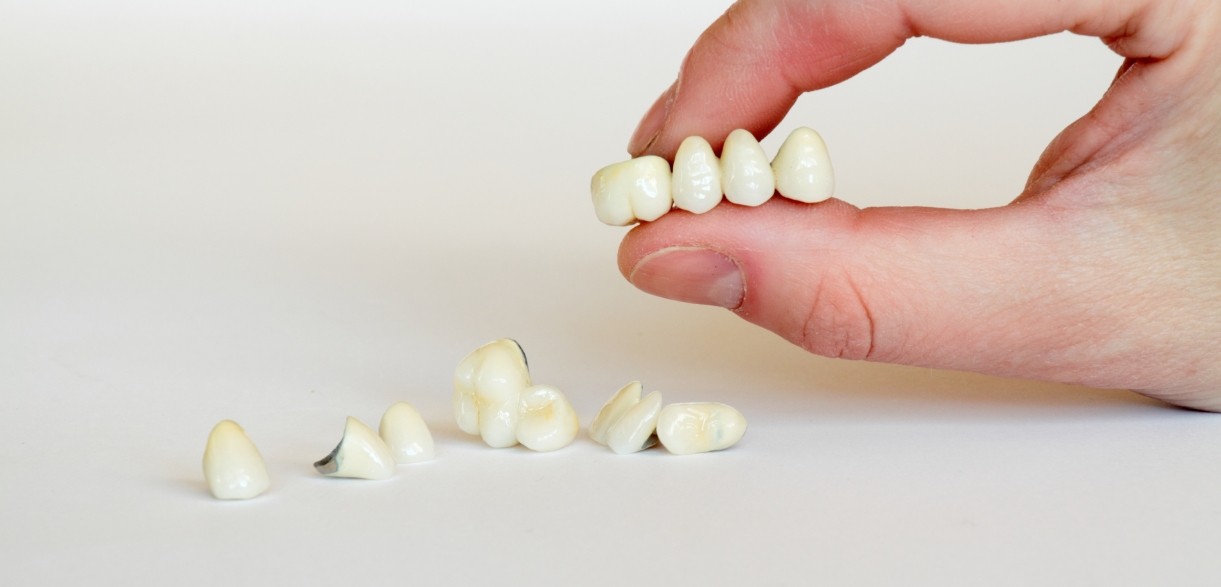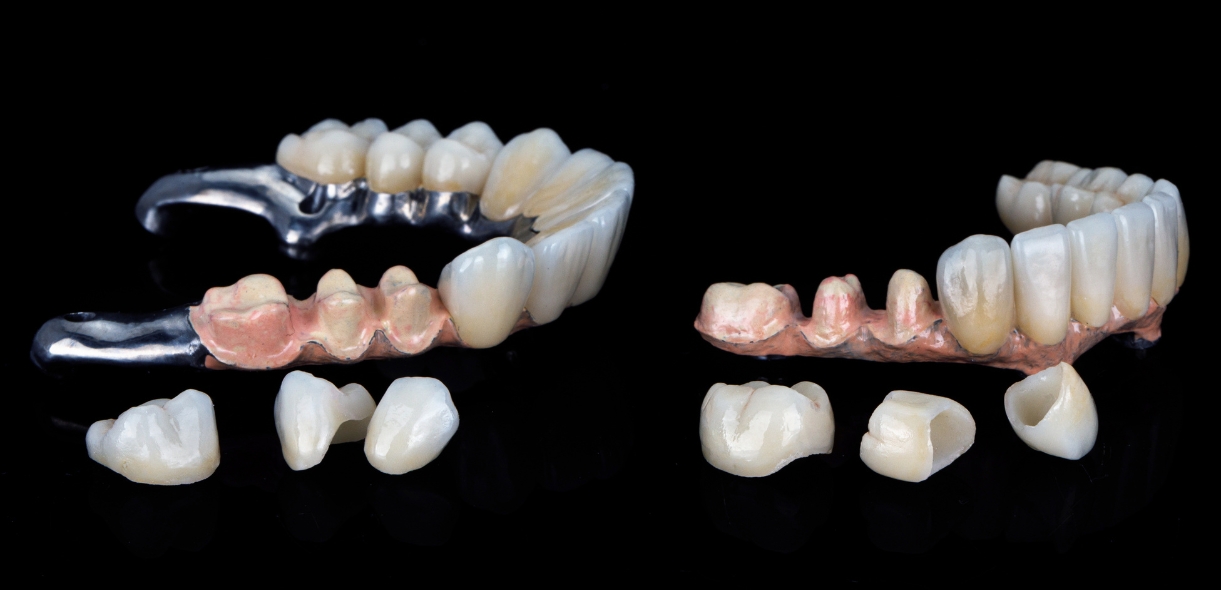
A brilliant smile is often a reflection of confidence and well-being. However, missing teeth can impact both appearance and oral health. Dental bridges offer a practical solution to restore smiles and functionality. This comprehensive guide aims to enlighten you about everything related to dental bridges. From understanding their types and benefits to the procedural aspects, you’ll know why you need them. By the end of this blog, we’ll ensure that you’re well-informed before making decisions about your oral health.
Types of Dental Bridges
Dental bridges come in various types, each designed to suit different dental situations and needs. Understanding the distinctions between these types can help you make an informed decision with your dentist. There are the following types of dental bridges:
Traditional Bridges: This type is the most common and involves creating a crown for the tooth or implant on either side of the missing tooth. This includes the presence of a pontic or a false tooth in between. These crowns act as anchors to hold the pontic in place.
Cantilever Bridges: Cantilever bridges are used when there’s only one adjacent tooth available for support on one side of the missing tooth. The pontic is anchored to the adjacent tooth.
Maryland Bonded Bridges: Also known as resin-bonded bridges, these consist of pontics held in place by a framework of metal or porcelain wings bonded to the adjacent teeth. They are often used for front teeth and require minimal alteration to the adjacent teeth.
Implant-Supported Bridges: Implant-supported bridges are considered the most stable and durable. They involve surgically placing implants into the jawbone to support the bridge. These bridges provide a sturdy and long-lasting solution. However, they may require more time for the implant integration process.
Hybrid Bridges: Combining the benefits of different bridge types, hybrid bridges may include a mix of traditional, cantilever, or implant-supported techniques. These are tailored to specific cases and offer a versatile approach to dental restoration.
Choosing the Right Type
The choice of bridge type depends on various factors, such as the location of missing teeth, overall dental health, budget, and the recommendation of your dentist. Traditional bridges are suitable for many cases, while implant-supported bridges are ideal for those seeking a more permanent solution.
Considerations for Selection
- Location of Missing Teeth: Different types of bridges may be more suitable for different areas of the mouth.
- Health of Adjacent Teeth: Some bridges require altering adjacent teeth, while others may not, making this a crucial consideration.
- Longevity and Durability: Implant-supported bridges often provide greater longevity but may require a more extensive procedure.
- Cost and Timeframe: Different types vary in cost and the time required for the procedure.
Benefits of Dental Bridges
Dental bridges offer a range of benefits beyond just enhancing your smile. Here are the advantages that make them a popular choice for restoring missing teeth:
Improved Appearance: Bridges fill gaps caused by missing teeth, enhancing your smile and facial aesthetics. They are custom-designed to blend seamlessly with your natural teeth, providing a natural look.
Restored Chewing Functionality: Missing teeth can make chewing difficult and affect your ability to enjoy certain foods. Bridges restore the ability to bite and chew properly, allowing you to enjoy a wider variety of foods without discomfort.
Maintenance of Facial Structure: When teeth are missing, facial muscles can sag, altering the shape of your face. Bridges help maintain the natural shape of your face by preventing the collapse of facial muscles and bone loss.
Prevention of Teeth Shifting: When a tooth is missing, adjacent teeth tend to shift or drift into the space, causing misalignment. Bridges fill the gap, preventing neighboring teeth from moving out of position.
Dental Bridge Procedure and Aftercare
The Procedure
Understanding the process involved in getting dental bridges and the aftercare needed is crucial for a successful outcome. Here’s a breakdown of the procedure and the essential steps for post-treatment care:
- Initial Examination: The process begins with a thorough examination by your dentist. X-rays are taken to evaluate the condition of your teeth and the surrounding bone structure.
- Tooth Preparation: If the adjacent teeth need preparation for a traditional bridge, the dentist reshapes these teeth to make space for the crowns. As a result, it provides proper support to the dental bridge.
- Impression Taking: Precise impressions of your teeth are made to ensure the bridge fits accurately. These impressions serve as a model for the creation of your custom bridge.
- Bridge Fitting and Adjustment: Once the permanent bridge is ready, it’s checked for fit and adjusted if necessary. The dentist ensures proper alignment and bites before permanently fixing the bridge in place.
Aftercare for Dental Bridges
- Oral Hygiene: Maintain good oral hygiene by brushing your teeth twice a day and flossing daily. Proper cleaning around the bridge and under the pontic is crucial to prevent plaque buildup.
- Regular Dental Check-ups: Visit your dentist for regular check-ups and professional cleanings. As a result, it helps to ensure the bridge remains in good condition and to address any issues early on. Refrain from chewing hard or sticky foods that could damage the bridge or put excessive pressure on it.
Cost and Insurance Coverage
Understanding the financial aspects of getting a dental bridge, along with potential insurance coverage, is essential for planning and decision-making. Different types of bridges have varying costs. For instance, implant-supported bridges tend to be more expensive due to the surgical procedure involved. The materials used for the bridge, such as porcelain, metal alloys, or a combination, can influence the cost.
Costs may vary depending on the geographic location and the specific dental practice. Dental insurance plans may provide coverage for a portion of the cost of a dental bridge. However, the extent of coverage can vary widely based on the insurance provider and the specific plan. Some plans may require pre-authorization or have limitations on coverage. It tends to involve waiting periods or restrictions on the types of bridges covered.
Dental bridges serve as an effective solution for restoring smiles and oral health. Armed with this comprehensive knowledge, individuals can confidently discuss options with their dentist and take steps toward reclaiming a confident, healthy smile. The journey towards a complete smile starts with being well-informed. Dental bridges offer a pathway to renewed confidence and oral well-being, ensuring you can smile freely once more.

